Streetcar Track Getting Installed
Tracks getting installed on St. Paul Ave.; other streets soon to come.
Installation of the track system for the Milwaukee Streetcar has begun on W. St. Paul Ave. Crews are constructing both the west-bound and east-bound tracks on the stretch of the route that connects the Milwaukee Intermodal Station and Westown with the Historic Third Ward.
As our photos capture, on Thursday afternoon crews from project general contractor Kiewet Infrastructure were aligning the steel rails between the Milwaukee River and N. 4th St.
The steel rails are being laid into a 8-foot wide and 2-foot deep segment of the street. Once the rails are in place crews will rebuild a cement road structure around the rails.
Vehicles will be able to drive in the same lane as the streetcar track when the work is complete. W. St. Paul Ave. is currently open to east-bound vehicles as the city seeks to minimize disruption from the large construction project.
In February Kiewet project manager Michael Ethier told the city’s streetcar oversight committee “it’s going to be a very busy 2017 building the guideway.” That might have been the understatement of the year. N. Broadway through East Town is already being prepped for track installation and work will begin next week. Starting May 17th, the northbound lanes of Broadway from E. Clybourn St. to E. Kilbourn Ave. will be closed for up-to three months. Construction will continue to roll along the 2.1-mile route throughout the year.
Installation of the track is far from the only streetcar-related construction going on. Crews are installing the foundation for supporting the overhead catenary system along the route. The concrete, cylindrical bases are being drilled into the ground between the sidewalk and curb. Poles will be mounted to bases this fall, and the overhead electrical power system will be strung between the poles. Prep work for the construction of the Milwaukee Streetcar Maintenance Facility is also underway.
Want to know when a certain segment of the route will be built? The project team has produced a draft construction timeline.
Photos
Project Timeline
Kiewet expects to complete construction in the second quarter of 2018 to allow for testing to commence. The Milwaukee Streetcar Maintenance Facility, being built under Interstate 794, is scheduled for completion before the end of 2017. The facility will be completed in advance so the city can safely store the vehicles delivered by Brookville Equipment Corporation.
Public operation on the initial route connecting the Milwaukee Intermodal Station and Westown with the Historic Third Ward, East Town and the Lower East Side is scheduled to begin in the fourth quarter of 2018 following route testing. The lakefront line extension is expected to begin operating in the fourth quarter of 2019. The system, including the lakefront line, is estimated to cost $128.1 million. The project’s design and construction is funded in part by $69.1 million in federal grants.
Utility work is wrapping up along the initial route. That work, which has been underway for over a year, has moved block-by-block throughout the route. We Energies and other utilities are hiring their own crews for that work and are being reimbursed by the city.
The announcement of an operator is expected in the coming months. As we’ve previously reported, the city is currently interviewing candidates.
If you think stories like this are important, become a member of Urban Milwaukee and help support real independent journalism. Plus you get some cool added benefits, all detailed here.
More about the Milwaukee Streetcar
For more project details, including the project timeline, financing, route and possible extensions, see our extensive past coverage.
- FTA Tells Milwaukee to Crack Down on Fare Evasion — Even Where Fares Don’t Exist - Graham Kilmer - Dec 12th, 2025
- Alderman, State Allies Seek Federal Help to Kill the Streetcar - Jeramey Jannene - Oct 28th, 2025
- Streetcar Service Suspended Following Truck Crash - Jeramey Jannene - Oct 21st, 2025
- One Alderman’s Quest To Defund The Streetcar - Jeramey Jannene - Oct 18th, 2025
- Another Streetcar Collision - Jeramey Jannene - Jun 27th, 2025
- Streetcar Hit By Apparent Red Light Runner - Jeramey Jannene - Jun 16th, 2025
- Streetcar Will Run On Consolidated Route During Summerfest - Jeramey Jannene - Jun 11th, 2025
- City Hall: Milwaukee Must Replace Failing Streetcar Switches - Jeramey Jannene - Feb 24th, 2025
- Streetcar Confronts Limited Funding, Operations Challenges - Evan Casey - Jan 22nd, 2025
- Council Kills Streetcar’s ‘Festivals Line’ - Jeramey Jannene - Jul 31st, 2024
Read more about Milwaukee Streetcar here
Eyes on Milwaukee
-
Church, Cupid Partner On Affordable Housing
 Dec 4th, 2023 by Jeramey Jannene
Dec 4th, 2023 by Jeramey Jannene
-
Downtown Building Sells For Nearly Twice Its Assessed Value
 Nov 12th, 2023 by Jeramey Jannene
Nov 12th, 2023 by Jeramey Jannene
-
Immigration Office Moving To 310W Building
 Oct 25th, 2023 by Jeramey Jannene
Oct 25th, 2023 by Jeramey Jannene


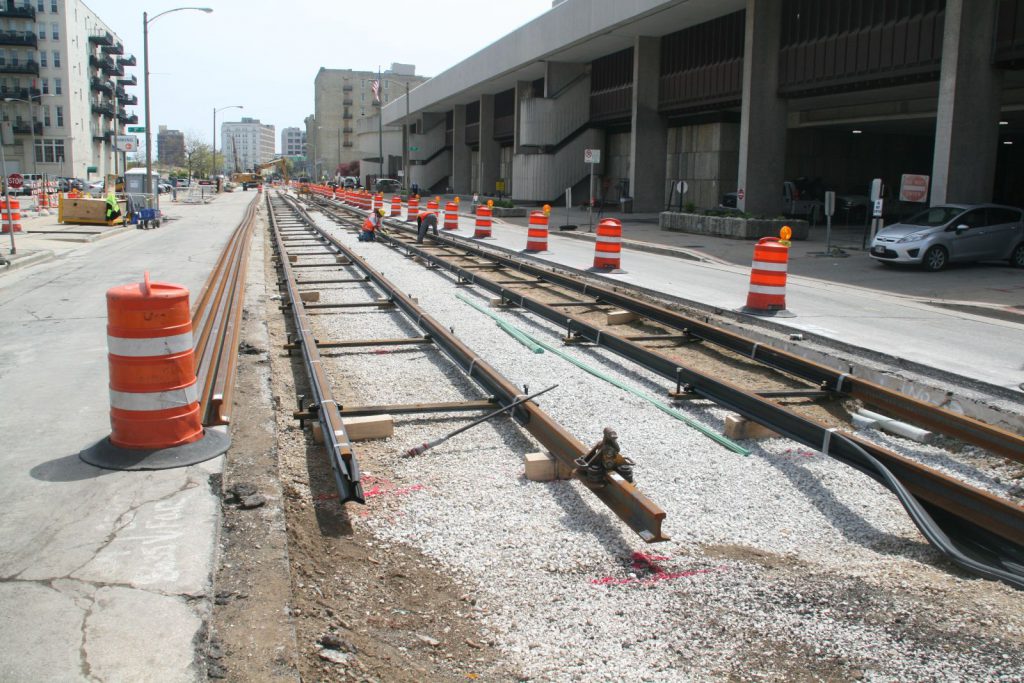
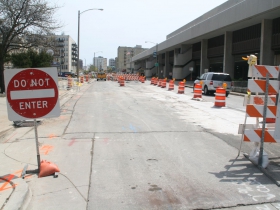
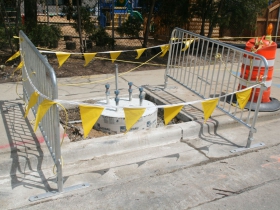
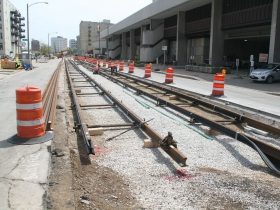
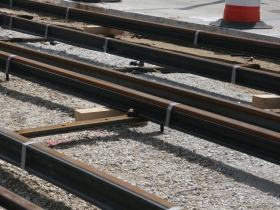
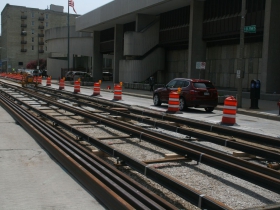
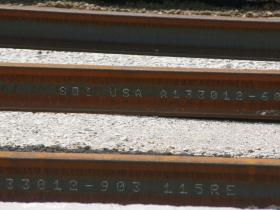




















It is not a long time ago that the buried rails from the streetcar system were finally taken out of our bus system right of way.That was the policy then when they were discontinued in case the system came back again so they would have the right of way intact.
It’s a pity!
How many rubber-tired busses could be purchased and placed into service within days, with no reconstruction of streets or disruption of traffic needed? And at a fraction of the cost! In addition buses can change the routes at a moments notice as needs change! It’s rather difficult to move track!
The difference in the cost could be transferred to improving the existing bus lines, some of which cover the same territory. Perhaps the simplest compromise would be to use the funds to expand the reach of the trolley that is already operating downtown (on rubber tires, of course)!
Any funds left over could be used to restore the longstanding numbers to the lines that now run anonymously with colors assigned instead. It is much easier to connect a number with a route. Also, there are many more numbers than colors to assign. I can’t imagine a “chartreuse” or” “magenta” or “mauve” bus line.
So, it’s a pity! A pity that commonsense has gone out the window, and people with ideas that have nothing to do with reality have taken over.
WOOHOOO— We finally broke into the 19th Century!
Now I can keep my horse tied up.
@Ben Funny, I’d say we’ve been stuck in 1886 for a long time https://en.wikipedia.org/wiki/History_of_the_automobile
This nonsense with streetcars is a plague fostered by the federal transportation agency: and Kansas City is cursed with the symptoms too. We have a 2.2 mlle streetcar that cost us considerably more than projected for the installation phase, and has since had accidents with cars, derailment, and street closures for water breaks, which makes it non functional. It is strictly for tourists, and those folks are seasonal and very uncertain in this economy.
Now the promoters of such are calling for an extension of this line – whether or not the residents want it. The only folks allowed to decide the first wave of stupidity were actual residents (not owners…) in real estate along the proposed track line. The actual real estate would then suffer the burden of the costs of such. 350 residents decided that first outcome and the same crooked means of deciding the extension is now being foisted on those who live along the proposed track line. The entire city is vehemently opposed to this streetcar fiasco but has no voice in the decisions. Whatta world.
Sharon The Kansas City Star wrote about the city’s streetcar performance just 10 days ago. They paint a very different picture than you do.
“Kansas City has blown past its original forecast of 2,700 rides per day, with 5,500 average daily rides over the past 12 months. Even more surprising, weekend ridership has exceeded weekday performance, as downtown weekend events have regularly filled the cars.
System planners originally thought Kansas City’s system might reach 1 million rides by its first anniversary, which is Saturday. Instead, it hit the 1 million milestone in October. Ridership dipped significantly in the cold months of December and January, but April was the third busiest month, behind July and August of last year.”
AND
The robust ridership prompted Slate writer Henry Grabar to pen an article in August: “Did an American City Finally Build a Good Streetcar?”
http://www.kansascity.com/news/local/kc-streetcar/article148797874.html
Wow, people really don’t like change. Yelling about bus lines named after colors?! Really Roy?
Some folks are talking like the streetcar is the fifth horsemen of the apocalypse, if you want to see a waste of money and infrastructure look at the highways.
Roy Gordon (post 2):
With one exception, it is illegal to use any federal money for big-city transit operations. That single exception is for new service, for which a one-time federal subsidy is allowed for up to 36 months.
Most of the streetcar’s federal funding is CAPITAL funds which can only be used for capital expenses (like tracks, vehicles, garages, etc); it would be illegal to use any of this money for operations (driver salary, daily cleaning and maintenance, etc). This restriction dates back to the Reagan Administration which opposed all federal transit subsidies but could only convince Congress to ban operating subsidies.
Milwaukee “color-coded” some bus lines so that they would qualify for 36 months of federal subsidy as “new service”. (I don’t think they are actually “new service”, but nobody asked me.)
Two other points…
There is no way “rubber-tired busses [sic] could be purchased and placed into service within days”. The delivery time for purchasing new transit buses is months to a year or more. It’s not like buying a new car (where dealers have dozens of brand-new vehicles). There is no inventory of new buses sitting around anywhere. Each new bus is built to order. And if a manufacturer has a backlog, it can take a year or more before they can start a new order.
Also, good bus service requires some street rebuilding, too (at bus stops). First, the street itself should be concrete because asphalt is soft and is deformed by a parade of heavy buses. And advanced bus stops use curb “bumpouts”—a wider sidewalk extending out through the parking lane. Bumpouts reduce the time needed to board and discharge passengers thereby increasing the vehicle’s effective speed. These bumpouts are used for Milwaukee’s streetcar and contribute to it’s one-time construction costs. Bus service without bumpouts (like MCTS) is cheaper to build but slower.
If you want to Compare KC and MKE, compare the routes, cost to residents in nieghborhoods not served by the trolley (ooops, I mean Street Car. Just like City Hall isn’t ‘sinking, just not ‘rising’, right? And when is Bruce gonna do a story on that one?). KC, for instance receives about 15 In of Snow per year. Milwaukee, over 50 ( and consider the Lake Effect snow on the Trol…. ooops Street Car). Or maybe Bruce could do a story on the crumbling streets and alleys on the NW side. And maybe interview a few pissed off residents. But I guess that wouldn’t play well in Arugalaville 3rd ward.
But I do appreciate the the occasional taking to task of Bud “Steroids” Selig. He established a precedent for scams like this.
Either give the streetcar a dedicated traffic lane with signal priority, or just buy a few new buses to run the route. Shared-traffic streetcars are the worst of all compromises; more expensive to lay track and they don’t get you anywhere any faster than a modern bus.
Phil, streetcars do fine in snow (better than buses). Toronto has more snow than Milwaukee and more streetcars than all US cities.
I always hear mention Milwaukee, streetcars & snow in the same sentence, as though it’s some type of problem. Streetcars ran for 68 years in Milwaukee, I think they’ll figure it out.
Tom D, exactly. It’s almost like the people that put little to no thought into this are the same people that voted for Trump.
I think you’re missing the point. Snow = cold, waiting. No one wants to ride a trolley that bad. BTW, Toronto actually gets less snowfall than MKE. sorry that distracted you all from comparing MKE’s presumed Trolley riderships with those in cities with median temps 5,10 or 20 higher than MKE.
Street cars do better than buses in snow? Where’d you get that from?
Wonder if any SC’s will be trolley-jacked. “My argument is, look, I understand if someone steals a car once it’s a joyride,” Barrett said during a mayoral debate. “The second time if there’s no gun involved, you can even say it then. But the third time, there has to be consequences.” So, yeah, greenlight for the first few felonies. I understand the cops won’t be allowed to pursue (and bear in mind the trolleys do better in snow than buses, so winter trolley jacking might become a big deal).
Phil (post 13), streetcars do better than buses in ice and snow because streetcars have 4-wheel drive, but buses don’t.
And unlike a 4WD car, streetcars maintain control even if 3 of 4 powered wheels hit ice simultaneously. By contrast, if only one wheel on a 4WD Jeep finds ice-free pavement, that Jeep will likely spin out; streetcars can’t spin out because their motion is constrained by their steel rails.
Finally, streetcars have built-in sand dispensers. If the front powered wheels hit ice and lose traction, a few grams of sand are dispensed directly onto both rails. On modern streetcars, this action is automatic (controlled by an on-board computer) and immediate (the sand is in place by the time the streetcar’s other powered wheels, 50 feet back, encounter that icy rail). This makes it almost impossible for a modern streetcar (with dual powered axles and computer-controlled sand dispensers) to ever lose all traction in ice or snow.
In cold weather, streetcars will be more, not less, attractive because the alternative (walking) is less attractive. On a cold, snowy day, I’d much rather ride in a toasty, heated streetcar than get frostbite walking, even if that means waiting 5 minutes for a streetcar to arrive. (The City has said that streetcars will run every 10 minutes most of the time, and running every 10 minutes means the average wait is about 5 minutes.)
Your suggestion of a “trolley-jacking” is silly. Do buses ever get “bus-jacked” in Milwaukee? If buses don’t get hijacked, why would streetcars? And just how would somebody do this since the streetcar can never stray from those fixed steel rails???
You know we have real-time apps for transit, right? When it’s a couple minutes away, walk outside to catch a ride.
Are you living under a rock in the year 1977? My god man, why don’t you tell us of the dangers of microwave ovens or T.V. remotes that are wireless.
Milwaukee and Toronto both average more than 40 inches a year in annual snowfall Phil. As others have effectively pointed out your arguments range from nonsensical to idiotic.
Just to pile on, I’d point out to Phil that Chicago has a robust transit system, much of which requires waiting outdoors in the same weather Milwaukee has, and yet millions of people ride it. How do they manage? I’ve already indicated the streetcar is a bad idea, but not for any reason you’ve raised.
From a financial perspective how much does the city project to lose each year in revenue and how does the street car affect the general budget. Will it lose $1 million a year or $10 million a year?